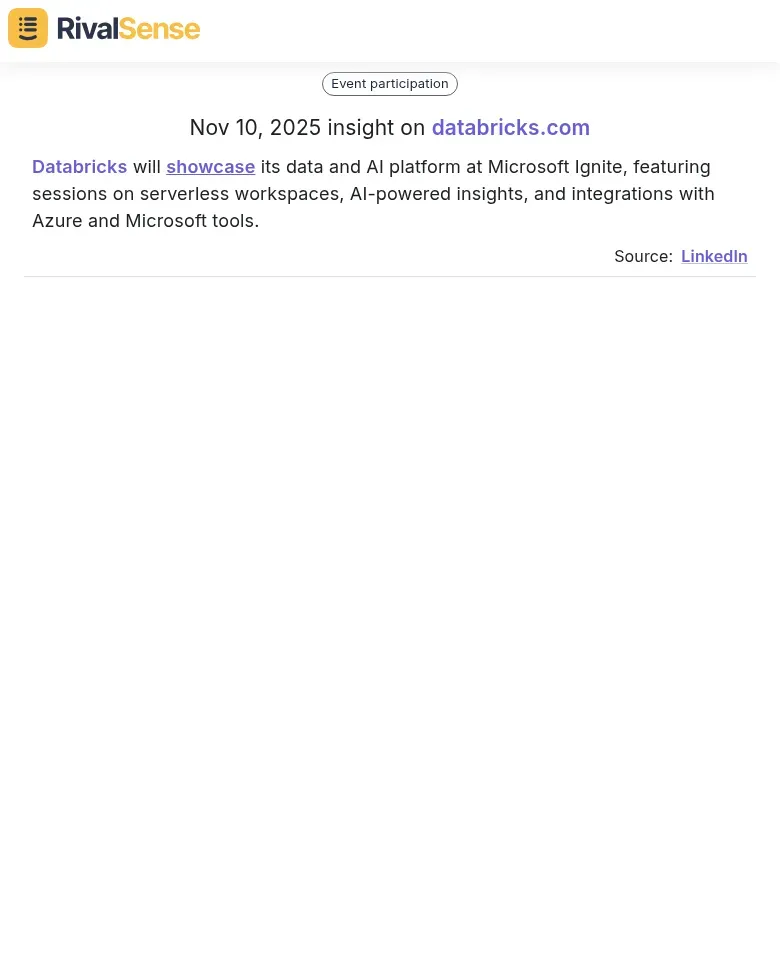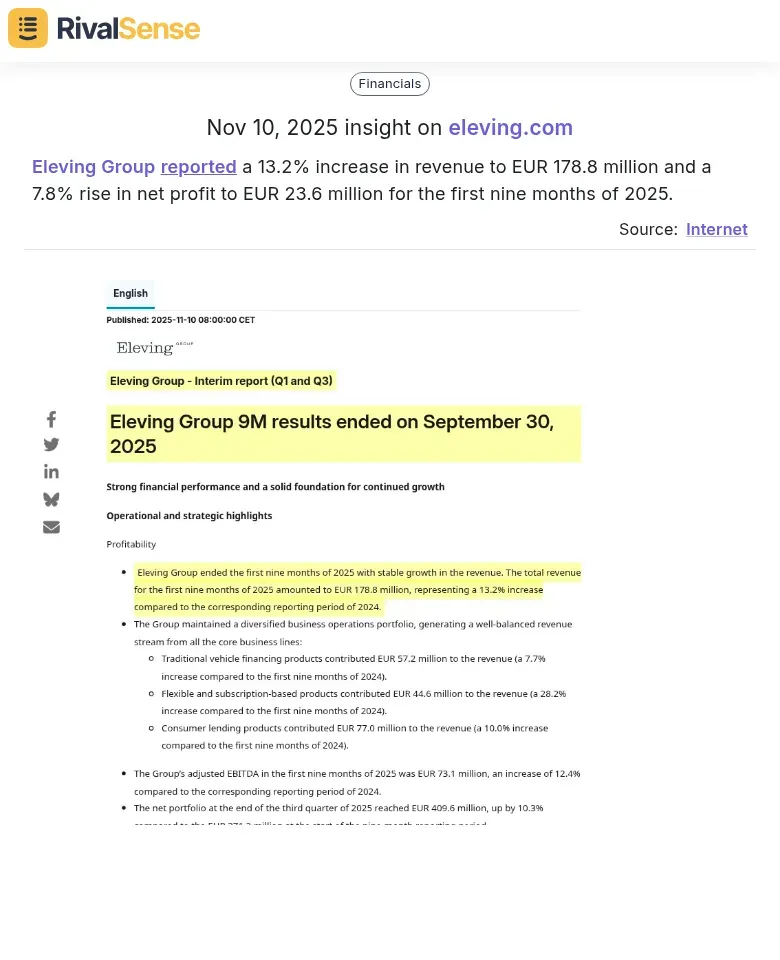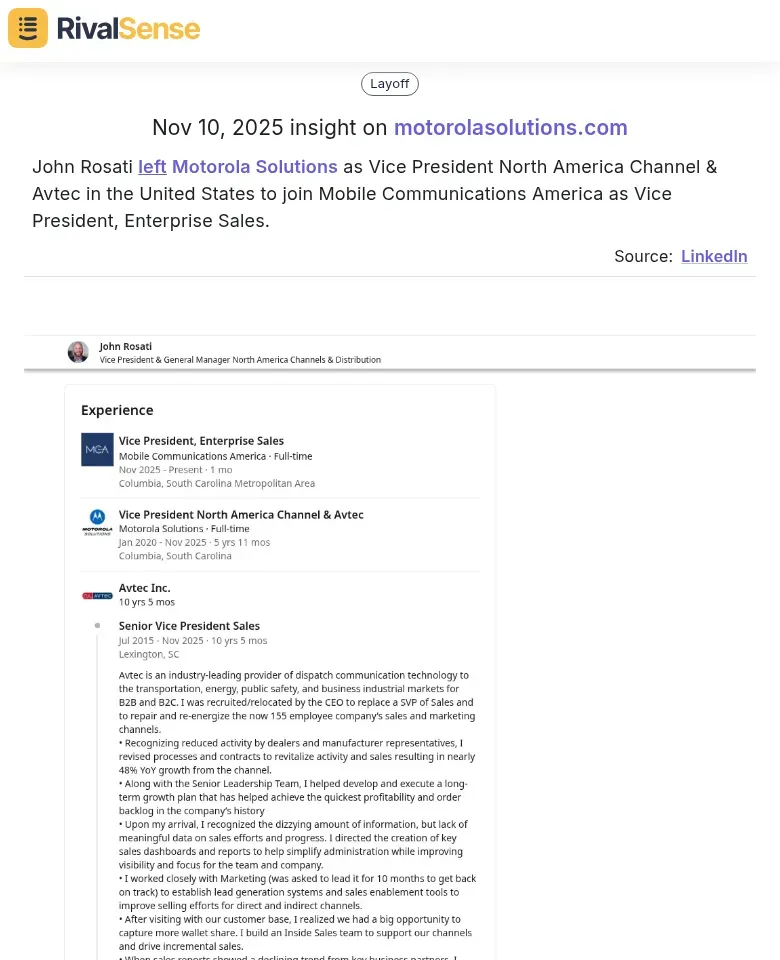How to Track Competitor Podcasts for Market Dominance in Heavy Equipment Repair
Competitor podcasts offer a unique, unfiltered view into your rivals' strategies and customer engagements in the heavy equipment repair industry. By consistently monitoring these audio channels, you can uncover genuine insights that written materials often overlook, helping you build a robust competitive intelligence framework over time.
🎧 Why Competitor Podcasts Are Your Secret Weapon
In the B2B heavy equipment repair sector, audio content reveals authentic industry challenges and innovative solutions that can inform your business decisions. Competitor podcasts serve as a secret weapon by providing direct access to market positioning, service differentiators, and emerging trends. Regularly listening transforms passive consumption into an active competitive edge, enabling you to anticipate shifts and refine your offerings proactively.
Practical Steps to Get Started:
- Identify Key Podcasts: Search for industry leaders and niche players using terms like "heavy equipment repair podcast" or "construction machinery maintenance show."
- Listen Systematically: Dedicate weekly time to episodes, noting recurring themes, pain points, and solution discussions.
- Analyze Positioning: Track how competitors position themselves—for example, as cost-leaders, tech innovators, or service experts.
- Extract Tactics: Look for mentions of new services, partnerships, pricing strategies, or customer success stories.
- Update Intelligence: Maintain a log or spreadsheet to spot trends and adapt your strategy in real-time.
This methodical approach ensures you stay ahead by turning insights into actionable strategies.
🔍 Identifying Key Competitors and Their Podcast Presence
Mapping your competitive landscape is the first step toward leveraging podcasts for strategic advantage. Direct competitors include other repair shops and service centers, while indirect competitors might be equipment manufacturers sharing maintenance advice or parts suppliers offering technical content. To dominate the market, you need a clear view of who is producing relevant audio content and how it impacts your business.
Start by using Google searches with specific keywords and check platforms like Apple Podcasts or Spotify for industry-related channels. Create a simple spreadsheet to organize your findings:
| Competitor | Podcast Name | URL | Release Frequency | Key Topics |
|---|---|---|---|---|
| Example Co. | Repair Insights | [Link] | Weekly | Engine diagnostics, hydraulic systems |
Assess podcast frequency and content quality through listener reviews and episode depth. Look for gaps in their discussions that you can exploit, such as underserved topics like mobile repair services or eco-friendly solutions. Tip: Set up alerts for new episodes to ensure you never miss an update.
🛠️ Tools and Methods for Systematic Podcast Tracking
Systematic tracking of competitor podcasts requires the right tools and a disciplined approach to gather consistent intelligence. Platforms like Chartable or Podtrac can automate monitoring by providing data on episode releases, listener demographics, and engagement metrics, saving you time and effort.
Set up custom alerts for new episodes to get immediate notifications on topics like hydraulic system repairs or engine diagnostics. Organize your tracking with a spreadsheet or CRM, logging details such as episode titles, release dates, main topics, and audience feedback. Include columns for competitive insights, such as pricing mentions or service innovations, to quickly reference later.
Checklist for Effective Tracking:
- [ ] Use podcast analytics tools for automated monitoring
- [ ] Schedule weekly reviews to analyze trends and updates
- [ ] Set keyword alerts for specific terms (e.g., 'CAT equipment maintenance')
- [ ] Cross-reference insights with social media for broader context
This structured method helps you stay proactive, identify content gaps, and refine your own strategies.
💡 Extracting Actionable Intelligence from Competitor Content
Competitor podcasts are rich sources of strategic intelligence that can directly influence your business decisions in heavy equipment repair. By carefully analyzing their content, you can uncover pricing strategies, emerging trends, and admitted weaknesses that reveal opportunities for your company. For instance, if a rival discusses tiered pricing for emergency repairs, you can adjust your packages to be more competitive.
Focus on identifying customer pain points and trends, such as parts shortages or demand for sustainable practices, to spot market gaps. Use a systematic approach to extract insights efficiently:
Actionable Intelligence Checklist:
- [ ] Note pricing cues and service package details
- [ ] Track trend keywords like 'telematics' or 'sustainability'
- [ ] Identify admitted shortcomings or service delays
- [ ] Use timestamps to organize insights for easy reference
- [ ] Validate findings with customer reviews or field feedback
This turns passive listening into data-driven strategies, enabling you to address trends early and exploit competitor vulnerabilities.
🚀 Translating Podcast Insights into Competitive Advantages
Translating insights from competitor podcasts into tangible advantages requires a proactive and strategic approach. When rivals reveal service expansions or operational challenges, you can develop counter-strategies that position your business as a leader. For example, if a competitor mentions limited expertise in hydraulic repairs, you can immediately enhance your team's skills and market this specialization.
To effectively leverage these insights, follow these steps:
- Develop Counter-Strategies: Create a 'competitor revelation tracker' in a spreadsheet. Document every service gap or weakness discussed, and plan responses like launching 24/7 support if competitors have limited hours.
- Enhance Service Offerings: Identify unaddressed customer needs. If competitors focus on large machinery, develop small-equipment repair packages to capture niche markets.
- Improve Marketing Messaging: Analyze how competitors position themselves and craft messages that highlight your strengths, such as 'precision repairs with lifetime warranty' to counter their 'fast turnaround' claims.
Practical Implementation Checklist:
- [ ] Assign team members to monitor specific competitor podcasts
- [ ] Hold monthly 'insight implementation' meetings to review findings
- [ ] Test new messaging in local markets before full rollout
- [ ] Track customer responses to refined offerings for continuous improvement
By acting swiftly on podcast insights, you can capture market share and strengthen your brand's reputation.
📈 Building a Sustainable Competitor Podcast Monitoring Program
A sustainable monitoring program ensures that competitor podcast insights become an integral part of your long-term strategy. Establish regular review cycles, such as monthly deep-dives, to analyze new episodes, guest experts, and emerging trends without overwhelming your team. This consistency helps maintain ongoing intelligence and keeps your business agile.
Train team members on effective analysis techniques through workshops that cover how to extract strategic insights from casual conversations. Focus on listening for key elements like pricing changes, service expansions, customer pain points, and technology mentions. Use real examples from heavy equipment repair podcasts to make the training practical and engaging.
Integrate podcast insights directly into strategic planning by presenting key findings during quarterly sessions. Create action items based on what you've learned—for instance, if competitors are expanding into hydraulic services, decide whether to enhance your own offerings. Build a feedback loop where field technicians validate insights against real customer interactions.
Tips for Sustainability:
- Assign 'podcast monitoring champions' who rotate monthly to keep perspectives fresh
- Use timestamped notes for quick reference during discussions
- Leverage shared digital trackers for collaborative insight logging
This approach prevents burnout and ensures that competitor intelligence drives informed decisions.
🌐 Beyond Podcasts: Leveraging RivalSense for Holistic Competitor Insights
While competitor podcasts provide valuable audio-based intelligence, a comprehensive tracking strategy should include multiple data sources to capture a full picture of your rivals' activities. Tools like RivalSense complement podcast monitoring by automatically gathering insights from company websites, social media, events, financial reports, and management changes, delivering them in a concise weekly email report.
For example, tracking event participations can reveal how competitors are positioning themselves in key industry gatherings. RivalSense insight: Databricks will showcase its data and AI platform at Microsoft Ignite, featuring sessions on serverless workspaces and AI-powered insights. This type of insight is valuable because it allows you to anticipate market moves and align your own event strategies to stay competitive.

Financial updates offer a clear view of competitor health and growth trajectories. RivalSense insight: Eleving Group reported a 13.2% increase in revenue to EUR 178.8 million and a 7.8% rise in net profit for the first nine months of 2025. Understanding financial performance helps you benchmark your own results and identify potential threats or opportunities in the market.

Management changes can signal strategic shifts or new market focuses. RivalSense insight: John Rosati left Motorola Solutions as Vice President North America Channel & Avtec to join Mobile Communications America as Vice President, Enterprise Sales. Monitoring such moves enables you to adapt your talent acquisition or partnership strategies in response to competitor reorganizations.

By integrating tools like RivalSense, you can automate the tracking of these critical insights, saving time and ensuring you never miss a key development.
✅ Take Action with RivalSense
Ready to elevate your competitor tracking beyond podcasts? Try RivalSense for free and get your first competitor report today to start transforming insights into actionable strategies for your heavy equipment repair business.
📚 Read more
👉 How RingCentral's AI Shift Reveals Your Next Growth Move
👉 Uncover Competitor Strategy Through Website Change Intelligence
👉 AI Data Labeling: Key Account Growth Strategies That Drive Revenue
👉 Competitor Employee Change Checklist: A Strategic Guide for Key Account Management
👉 Tesla's Updated Semi: A Deep Dive into Competitor Analysis
